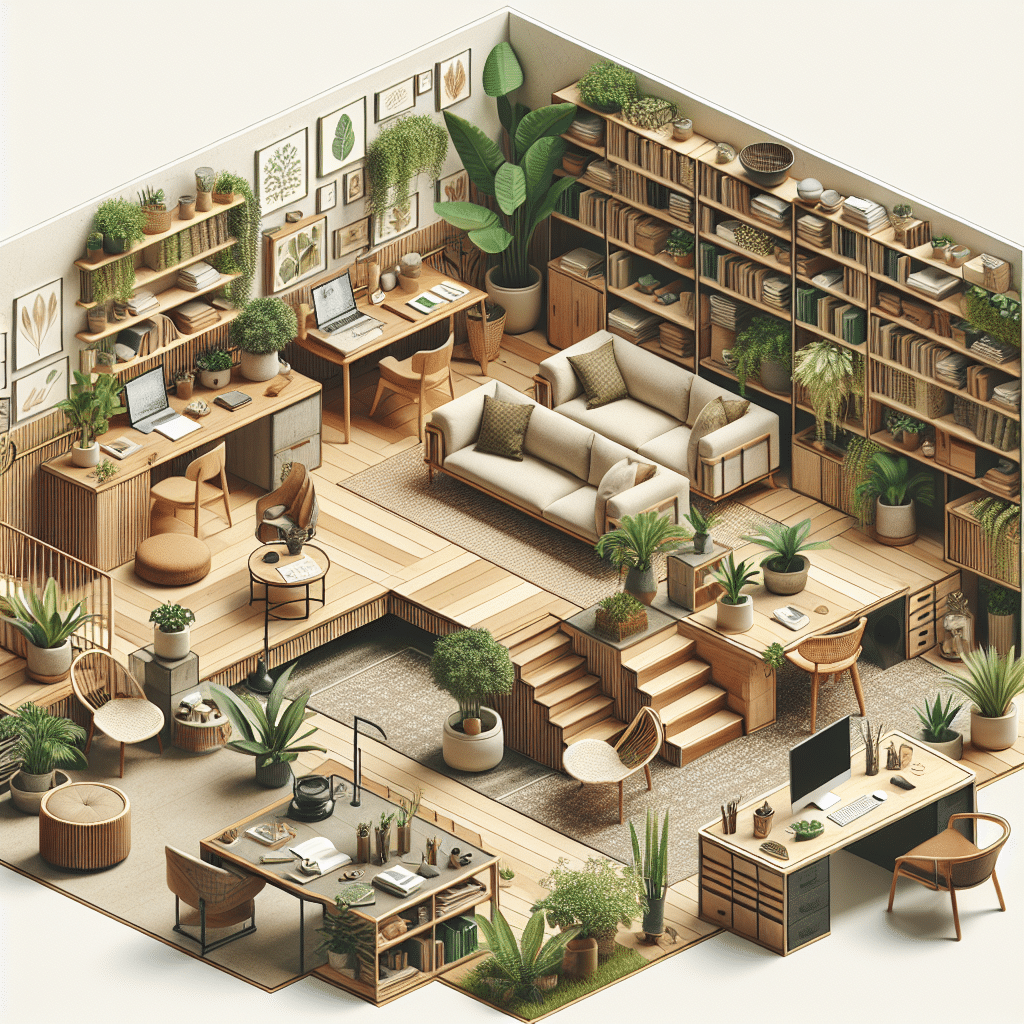Efficient Furniture Layouts Using Sustainable Materials
Understanding Sustainable Materials
Sustainable materials are resources sourced with minimal impact on the environment. Common examples include reclaimed wood, bamboo, recycled metal, hemp fabric, and organic cotton. These materials often have lower ecological footprints, making them ideal for eco-friendly furniture. Incorporating sustainable materials not only helps to preserve natural resources but also creates a healthier living environment.
Principles of Efficient Furniture Layout
Efficient furniture layout is about maximizing space utilization while creating an aesthetically pleasing and functional environment. Key principles include:
- Flow: Ensure a natural traffic flow throughout the space while avoiding obstacles.
- Functionality: Every piece of furniture should serve a purpose and be accessible.
- Zoning: Create distinct areas for different activities, such as work, relaxation, and socializing.
- Proportions: Choose furniture proportions in harmony with the room size to avoid overcrowding.
Living Room Layouts with Sustainable Furniture
For the living room, consider a layout that promotes conversation, relaxation, and movement. Using sustainable materials, here’s a strategy:
- Sofa and Chairs: Choose a sectional sofa made from reclaimed wood and upholstered in organic cotton. Arrange it to face a focal point, such as a fireplace or television, to encourage social interaction.
- Coffee Table: A circular coffee table made of bamboo can soften the space and allow for easy movement around it. This material is incredibly sustainable, fast-growing, and durable.
- Accessories: Incorporate decorative items made from recycled materials, such as metal sculptures or reclaimed wood bookshelves. Use throw pillows made from hemp fabric for additional comfort and eco-friendliness.
- Area Rugs: Opt for rugs made from sustainable materials, such as jute or organic cotton. They not only add texture but are also biodegradable.
Bedroom Layouts with Sustainable Furniture
The bedroom requires a more personal and serene layout. Here are strategies for furniture placement using sustainable materials:
- Bed Placement: Position a bed frame created from reclaimed wood centrally against the wall, ensuring it is the focal point of the room. Consider an organic mattress to promote better sleep.
- Nightstands: Use bedside tables from bamboo or FSC-certified wood, providing a stylish and eco-friendly touch. Ensure they are easily accessible from the bed.
- Chests and Dressers: Incorporate a chest of drawers constructed from recycled materials. Place it against a wall with good access while ensuring the flow of movement is not obstructed.
- Textiles: Use organic cotton sheets and pillowcases along with hemp or bamboo bedspreads. These sustainable fabrics contribute to a healthier sleep environment.
Kitchen and Dining Areas
Efficient furniture layout in the kitchen and dining areas promotes functionality and ease of movement:
- Dining Tables: A farmhouse-style dining table made from reclaimed wood provides character and is ideal for both dining and social gatherings. Ensure it is set in proximity to cooking elements.
- Seating Arrangement: Incorporate chairs crafted from sustainable materials like recycled plastic or reclaimed wood. These should be comfortably arranged to encourage conversation.
- Work Zones: Zone the kitchen with designated areas for cooking, prepping, and dining. Use sustainable materials for cabinets and countertops, like bamboo or recycled glass, which are both durable and aesthetically pleasing.
- Ventilation: Ensure proper airflow in the kitchen by arranging furniture to promote visibility and movement, making it a more enjoyable cooking space.
Home Office Layouts
As remote work becomes increasingly popular, efficient office layouts are vital:
- Desk Placement: Choose a desk made from sustainable materials, such as reclaimed wood, and place it near natural light sources to improve productivity and well-being.
- Ergonomics: Incorporate an ergonomic chair made from sustainable materials, ensuring comfort during long work hours. Look for chairs that use recycled metal or eco-friendly fabrics.
- Storage Solutions: Use shelves and filing cabinets made of sustainable wood or recycled composite materials to retain organization while remaining eco-conscious.
- Decorative Touches: Enhance motivation with art pieces made from sustainable sources, like prints on recycled paper. Incorporate plants, which can thrive in natural light and improve air quality.
Outdoor Furniture Layouts
Creating efficient layouts for outdoor spaces is equally essential. Sustainable materials extend to outdoor furniture:
- Seating Arrangements: Arrange benches or chairs made from recycled plastic or sustainably sourced wood around a fire pit or in a garden area. This encourages gatherings while ensuring durability against the elements.
- Tables: Use a sustainable material dining table for outdoor dining. A table made from teak wood, known for its natural resistance to decay, can withstand various weather conditions.
- Functionality: Include multifunctional furniture, such as storage benches that can serve as seating and hide garden tools or cushions.
- Pathways: Design pathways with eco-friendly pavers, allowing easy navigation through outdoor spaces while integrating with the landscape harmoniously.
Universal Design Considerations
When planning furniture layouts, it is crucial to consider accessibility and inclusivity:
- Furniture Height and Space: Ensure furniture is appropriately sized for all users, including those with mobility challenges. Use chairs with armrests and tables at standard heights.
- Environmentally Friendly Options: Choose sustainable materials that are durable and recyclable, promoting a longer life cycle for the furniture and making it easier to replace parts as necessary.
- Versatile Spaces: Design spaces that can adapt to multiple uses, allowing for flexibility in layouts without compromising accessibility or sustainability.
Conclusion
By integrating sustainable materials into smart furniture layouts, individuals can create beautiful, functional spaces that respect and enrich the environment. Each piece of furniture, from the living room to the outdoor area, contributes to a holistic approach to eco-friendly interior design. This combination of sustainability and thoughtful layout ensures that living spaces enhance quality of life while minimizing ecological impacts.
